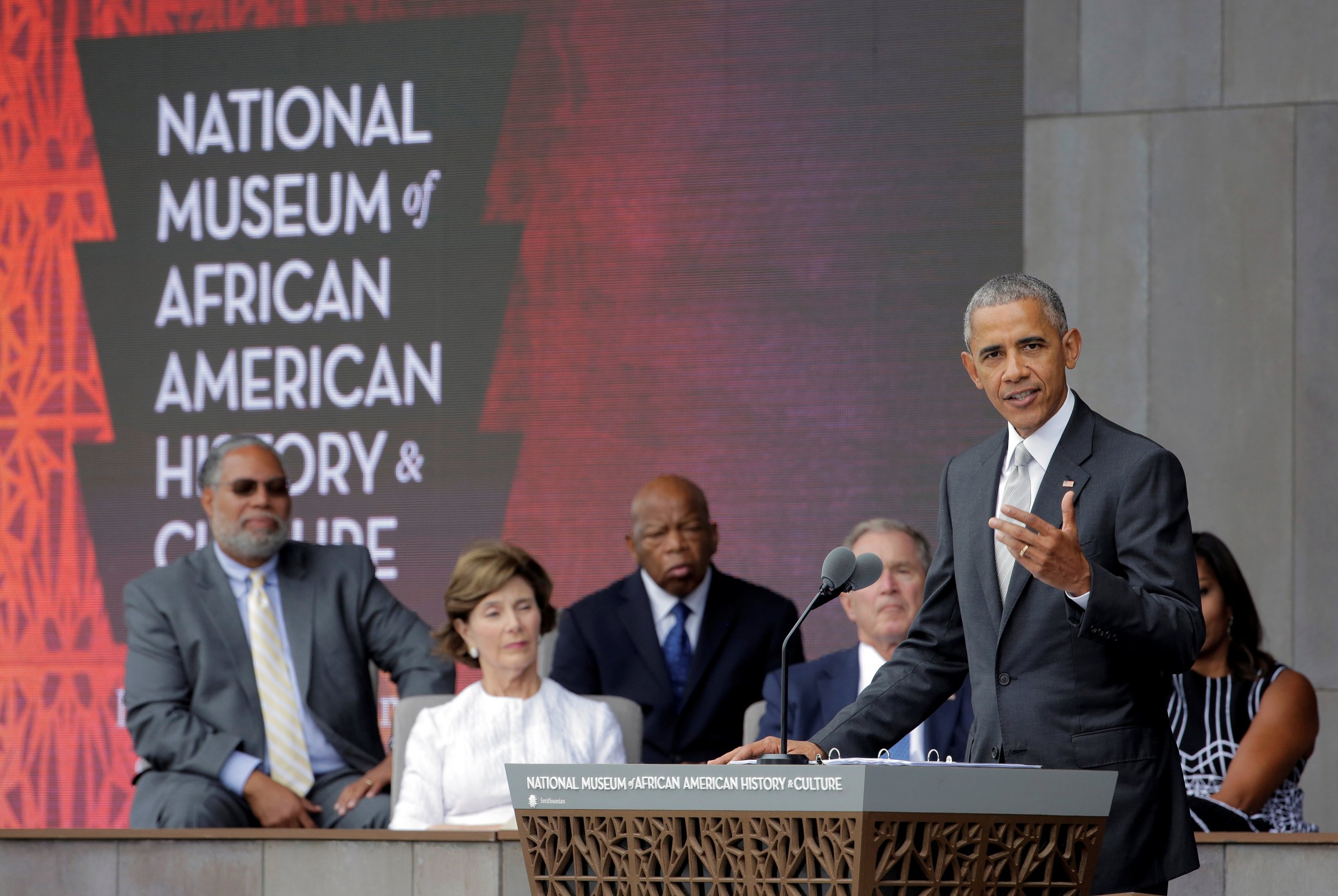
After more than a century of planning, President Obama dedicated the Smithsonian's National Museum of African American History and Culture on Saturday.
"This national museum helps to tell a richer and fuller story of who we are. It helps us better understand the lives, yes of the president, but also the slave, the industrialist but also the porter, the keeper of the status quo but also the optimist seeking to overthrow that status quo, the teacher, or the cook, alongside the statesman," Obama said.
The 400,000-square-foot museum on the National Mall houses 36,000 diverse artifacts from America's antebellum past to the present day, including Emmitt Till's casket, the 1960 lunch counter sit-in, Harriet Tubman's shawl and more. While only a limited number were able to access the sold-out museum on Saturday, the inauguration ceremony unfolded before 7,000 official guests and thousands more spectators, according to the Washington Post. Speakers included Congressman John Lewis, who advocated for an African American history museum for years, and President George W. Bush, who signed the 2003 law authorizing the construction of the museum.
An emotional Lewis, who first earned national attention as the chairman of the Student Nonviolent Coordinating Committee and one of the organizers of the 1963 March on Washington, said he had been waiting for this day "in some ways, my whole life.
"While the journey has been long, today the history of African Americans will finally take its place on the National Mall next to the monuments to Washington, Lincoln, and Jefferson—exactly where it belongs. It is important that The National Museum of African American History and Culture tells the unvarnished truth of America's history—a story that speaks to the soul of our nation, but one few Americans know. It's a reminder that 400 years of history can't be buried; its lessons must be learned. By bringing the uncomfortable parts of our past out of the shadows, we can better understand what divides us and seek to heal those problems through our unity. If we look at the glass-topped casket that displayed the brutalized body of Emmett Till and hear his story, we may better understand the exasperation and anger Americans feel today over the deaths of Trayvon Martin or Tamir Rice," Lewis said.
Obama also referenced present-day protests around police treatment of black Americans amid numerous high-profile deaths at the hands of authorities in recent years.
"This is the place to understand how protests and love of country don't merely coexist, but inform each other. How men can probably win the gold for their country, but still insist on raising a black-gloved fist. How we can wear an 'I Can't Breathe' T-shirt, and still grieve for fallen police officers. Here, the American wears the razor-sharp uniform of the chairman of the Joint Chiefs of Staff, belongs alongside the cape of the Godfather of Soul.
"We have shown the world we can float like butterflies, and sting like bees, that we can rocket into space like Mae Jemison, steal home like Jackie, rock like Jimmy, stir the pot like Richard Pryor. And we can be sick and tired of being sick and tired like Fannie Lou Hamer, and still rock steady like Aretha Franklin," the president said.
The push to establish a museum of African American history began in 1915 with black Civil War veterans collecting funds to establish such a museum. In 1929, President Calvin Coolidge signed Public Resolution 107, establishing a commission to plan its construction, but the project went nowhere. It took a renewed effort by lawmakers and African-American leaders beginning in the 1960s, and then decades of planning and proposals, before Bush authorized the museum.
The museum's nine floors contain three history galleries covering slavery through present day, including the #BlackLivesMatter movement; a theater named for donor Oprah Winfrey; culture galleries featuring African-American icons of music, theater, film and television; and a Contemplative Court, where visitors can reflect on what they've seen.
Pre-reserved, timed tickets are needed for museum entry, and they are sold out through 2016, the Washington Post reported.
Uncommon Knowledge
Newsweek is committed to challenging conventional wisdom and finding connections in the search for common ground.
Newsweek is committed to challenging conventional wisdom and finding connections in the search for common ground.
About the writer
To read how Newsweek uses AI as a newsroom tool, Click here.








